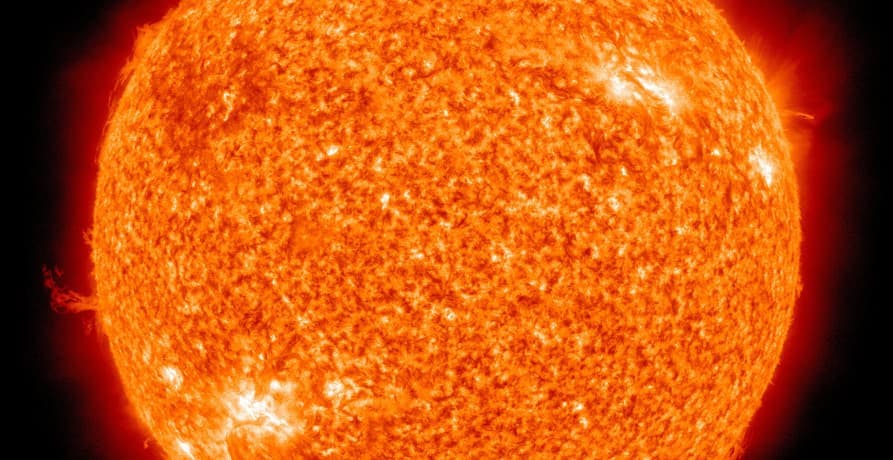ESG / CSR
Industries
What is the Maunder Minimum?



The Maunder Minimum was a period of unusually low solar activity that occurred between 1645 and 1715, marked by a significant reduction in sunspots on the Sun’s surface. This solar phenomenon coincided with a time of cooler global temperatures, often linked to the Little Ice Age in Europe, and has intrigued scientists for centuries due to its potential connection with climate patterns on Earth.
Though often overlooked outside scientific circles, the Maunder Minimum provides valuable insights into the relationship between solar cycles and global temperatures, as well as the broader mechanisms driving climate fluctuations.
👉 In this article, we'll explore what the Maunder Minimum was, what caused it, how it influenced the Earth's climate, and why it still matters for scientific research today.
What is the Maunder Minimum?
The Maunder Minimum refers to a prolonged period of exceptionally low solar activity that occurred between 1645 and 1715. During this time, astronomers observed a dramatic decline in the number of visible sunspots - dark patches on the Sun's surface linked to magnetic activity. Sunspots typically follow an 11-year cycle of waxing and waning, but during the Maunder Minimum, the Sun experienced an extended phase of minimal activity, with years passing without any sunspots recorded at all.
The phenomenon was named after British astronomers Edward Walter Maunder and Annie Russell Maunder, who, in the late 19th and early 20th centuries, analysed historical sunspot records and identified this striking period of solar inactivity. Their research confirmed earlier observations but brought renewed attention to the link between solar activity and climate patterns on Earth.
While the Maunder Minimum is often discussed alongside the Little Ice Age (a period of cooler temperatures during the same timeframe) it’s important to clarify that the relationship between solar activity and global climate is complex. However, the significant reduction in sunspot activity observed during this period remains one of the most notable deviations from the typical solar cycle in recorded history, making it a key focus of solar physics and climate science research.
What causes the Maunder Minimum?
The Maunder Minimum was primarily driven by a significant and prolonged drop in solar magnetic activity, which directly influenced the formation of sunspots. To understand the root cause, we first need to understand how the solar cycle operates.
The Sun goes through a roughly 11-year cycle of activity, characterised by fluctuating levels of sunspots, solar flares, and magnetic field shifts. Sunspots appear when intense magnetic fields disrupt the normal flow of energy from the Sun’s core, leading to cooler, darker patches on the solar surface. More sunspots generally indicate a period of heightened solar activity, while fewer sunspots suggest a quieter phase.
During the Maunder Minimum, this cycle was significantly suppressed, with sunspots becoming extremely rare for nearly seven decades. Though the exact reasons behind such extended periods of low solar activity remain under investigation, several key theories have emerged:
- Magnetic field weakening: The Sun’s magnetic field may have weakened or entered a phase of irregularity, reducing the formation of sunspots and solar flares.
- Internal solar dynamics: Fluctuations in the Sun’s internal convection processes, which drive energy transfer and magnetic activity, could have disrupted the typical sunspot cycle.
- Long-term solar cycles: Some scientists propose that the Maunder Minimum may be part of a larger, centuries-long solar cycle that influences activity over longer timescales than the standard 11-year pattern.
While the precise triggers remain debated, modern observations confirm that solar activity can experience prolonged lows, though none as extreme as the Maunder Minimum in recent centuries. Understanding these variations helps scientists study the Sun’s impact on Earth’s climate and the broader dynamics of stellar behavior.
Discovery of the Maunder Minimum
The Maunder Minimum was first identified through historical sunspot records - rather remarkable considering the limited technology available during the 17th and 18th centuries. Systematic observations of sunspots began in the early 1600s, notably following the invention of the telescope. Astronomers such as Galileo Galilei and Johannes Hevelius made some of the earliest recorded observations of sunspot activity, documenting the patterns visible on the Sun’s surface.
However, it wasn’t until the late 19th century that the phenomenon was formally studied and named. British astronomers Edward Walter Maunder and Annie Russell Maunder played a pivotal role in identifying this period of reduced solar activity. While reviewing historical records, they noticed a striking scarcity of sunspots between 1645 and 1715, far below the typical variations seen in the solar cycle.
Their work built upon earlier observations by German astronomer Gustav Spörer, who had also noted a sunspot absence during the same period. This led to the term Maunder Minimum becoming widely adopted in scientific literature, though it is sometimes referred to as the Spörer Minimum in earlier references.
The discovery was significant not only for solar physics but also for its implications for climate history. During the Maunder Minimum, Europe experienced a period of colder winters and disrupted weather patterns, which sparked interest in the potential link between solar activity and Earth’s climate. This historical context emphasises the importance of long-term solar observations for understanding natural climate variability.

Climate impacts during the Maunder Minimum
The Maunder Minimum coincided with a period of cooler global temperatures, particularly in the Northern Hemisphere, often associated with the Little Ice Age. This climatic event, spanning roughly from the 14th to the 19th century, saw some of the coldest winters on record, with significant social and environmental impacts.
During the Maunder Minimum (1645-1715), historical accounts describe harsh winters, including the freezing of the River Thames in London, a rare phenomenon captured in paintings from the time. Similarly, canals in the Netherlands froze solid, disrupting trade and daily life. Glaciers in the Alps expanded, and regions in Scandinavia and North America experienced shorter growing seasons, leading to crop failures and food shortages.
Scientists have long debated whether the Maunder Minimum was a direct cause of the Little Ice Age or if it merely coincided with it. While reduced solar activity likely played a role, other factors also contributed to global cooling during this period:
- Volcanic activity: Several large volcanic eruptions occurred in the centuries surrounding the Maunder Minimum, including the eruption of Mount Hekla in 1693. Volcanic aerosols released into the atmosphere can reflect sunlight, leading to short-term cooling effects.
- Ocean circulation changes: Shifts in oceanic currents, such as a weakening of the Atlantic Meridional Overturning Circulation (AMOC), may have further amplified cooling trends.
While the exact contribution of solar activity to the Little Ice Age remains debated, the correlation between the Maunder Minimum and cooler global temperatures highlights the potential influence of solar cycles on climate. Modern climate models use these historical events as reference points to understand how external forces can impact Earth’s climate system over long timescales.
Why does the Maunder Minimum matter today?
The Maunder Minimum remains a critical reference point for understanding both solar physics and climate science. While it occurred centuries ago, its insights continue to inform modern research on solar cycles, climate variability, and the factors influencing Earth's temperature balance.
One of the primary reasons the Maunder Minimum is significant today is its demonstration of how solar activity can fluctuate dramatically over extended periods. Studying this historical event helps scientists better understand the Sun’s magnetic activity and the long-term patterns of solar cycles. This research is particularly relevant as we continue to monitor the Sun’s activity to identify whether similar periods of low activity could occur again in the future.
However, the Maunder Minimum also offers an important lesson about the complexity of climate drivers. While reduced solar activity may have contributed to cooler temperatures during the Little Ice Age, it was not the sole factor. Volcanic activity, ocean circulation changes, and other natural events also played significant roles, reminding us that climate change is often influenced by multiple interacting forces.
In today's context, the Maunder Minimum is frequently mentioned in discussions about modern solar variability. Some have speculated that we could be entering a new period of reduced solar activity, raising questions about whether it could offset human-caused global warming. However, scientific consensus overwhelmingly agrees that any natural decline in solar output would be insufficient to counteract the current rate of anthropogenic greenhouse gas emissions driving climate change.
Ultimately, the Maunder Minimum emphasises the importance of studying historical climate events as part of a broader understanding of Earth’s complex climate system. By examining past climate shifts, scientists can refine modern climate models and better predict how different natural and human influences shape the planet’s future.
Is the sun entering a New Maunder minimum?
In recent years, discussions about the Sun’s declining activity have sparked speculation about the possibility of a new Maunder Minimum. Some media outlets and climate skeptics have even suggested that another period of low solar activity could trigger global cooling significant enough to offset human-caused climate change. However, the scientific consensus tells a different story.
While the Sun goes through natural fluctuations in activity, including periods of lower sunspot counts, there is no evidence suggesting a return to a Maunder Minimum-level event in the near future. The current solar cycle, while experiencing some weaker phases compared to past cycles, still shows regular sunspot activity within expected ranges.
More importantly, even if the Sun were to enter a prolonged period of low activity, the cooling effect would be minimal compared to the current pace of global warming driven by human emissions of greenhouse gases. Modern climate models estimate that a decrease in solar output similar to the Maunder Minimum would lead to a cooling effect of only about 0.1°C to 0.2°C - a small fraction compared to the warming trend caused by anthropogenic carbon emissions.
Key points clarifying why a new Maunder Minimum would not halt global warming:
- Magnitude of influence: Solar activity variations have a much smaller impact on global temperatures compared to greenhouse gas emissions.
- Long-term trends: Current global warming is driven primarily by rising CO₂ levels, which have reached concentrations far beyond pre-industrial levels.
- Scientific consensus: Studies, including reports from the IPCC, confirm that solar variability alone cannot explain the current pace of climate change.
While monitoring solar cycles remains crucial for understanding climate dynamics, the idea that a new Maunder Minimum could halt or reverse climate change is not supported by evidence. Understanding this helps reinforce the importance of reducing human-driven emissions to address global warming rather than relying on natural solar fluctuations.
How Greenly can help your company
While the Maunder Minimum highlights the influence of natural solar activity on historical climate patterns, the challenges we face today are driven primarily by human activity - particularly greenhouse gas emissions. Understanding these emissions and managing them effectively is crucial for businesses aiming to reduce their environmental impact.
Greenly offers comprehensive carbon management solutions, empowering companies to take control of their emissions through:
- Carbon Footprint Measurement: Greenly helps businesses measure their Scope 1, 2, and 3 emissions using robust data analysis.
- Lifecycle Assessments (LCAs): Expert guidance on conducting LCAs to evaluate the environmental impact of products from raw materials to disposal.
- Emission Reduction Strategies: The creation of tailored action plans to help businesses minimise their carbon footprint through energy efficiency and supply chain improvements.
- Sustainable Supplier Support: Offering a network of vetted sustainable suppliers to help companies reduce emissions in their value chains.
By using science-backed data and expert tools, Greenly helps businesses take meaningful steps toward emissions reduction, making sustainability both actionable and transparent. Get in touch with us today to find out more.





